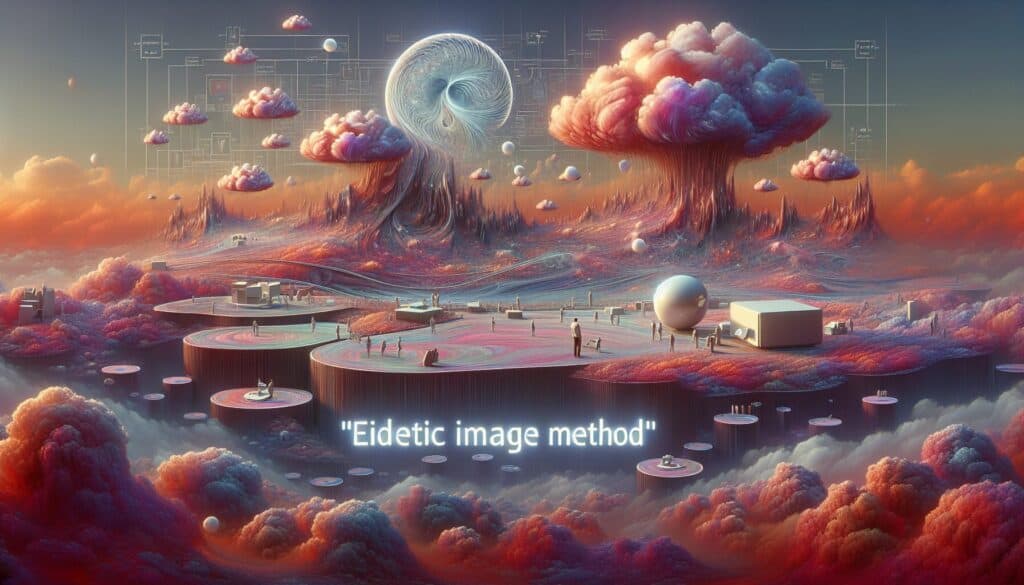A technique used in user research and design to elicit detailed, almost photographic, recall of experiences or interactions with a product or system.
- Methodologies: Engineering, Quality
Eidetic Image Method

Eidetic Image Method
- Customer Experience, Customer Journey Mapping, Design Thinking, Interaction Design, Usability, Usability Testing, User experience (UX), User-Centered Design
Objective:
How it’s used:
- Users are guided to vividly recall a specific past experience with a product, focusing on sensory details, actions, and emotions. The interviewer probes for rich details as if the user is reliving the event.
Pros
- Can uncover deep insights and emotional responses that might be missed by other methods; helps understand the nuances of user experience; provides rich qualitative data.
Cons
- Relies heavily on participant's memory and ability to articulate eidetic-like recall; can be time-consuming per participant; requires skilled interviewing techniques to guide recall without leading the participant.
Categories:
- Customers & Marketing, Product Design
Best for:
- Eliciting rich, detailed recall of user experiences to uncover deep insights and emotional responses.
The Eidetic Image Method finds application in various sectors such as consumer electronics, automotive design, and healthcare product development, where understanding the emotional connection users feel towards a product can significantly inform design decisions. This methodology is particularly valuable during the early phases of product development, especially in user research and ideation stages, where capturing nuanced user experiences can lead to innovative solutions tailored to real needs. Facilitated workshops or interviews involving stakeholders, including designers, product managers, and end-users, can help create a comprehensive snapshot of user engagement with products. Participants are encouraged to share stories in a controlled setting designed to encourage vivid recall, often guided by seasoned moderators trained in qualitative research techniques. The richness of the data collected through this method provides designers and engineers with a deeper comprehension of user expectations, motivations, and emotional reactions, allowing them to iterate on designs that resonate more profoundly with users. This approach also complements quantitative methods by filling the gaps that numbers may miss, revealing not only what users did but why they felt the way they did during their interactions.
Key steps of this methodology
- Guide users to select a specific product experience.
- Encourage users to focus on sensory details during the recollection.
- Prompt users to describe their actions taken with the product.
- Inquire about emotional responses throughout the experience.
- Explore contextual factors surrounding the experience.
- Probe for nuanced details that surface during recall.
- Facilitate a deeper reliving of the experience with open-ended questions.
Pro Tips
- Encourage participants to express sensory details vividly, prompting questions that highlight sight, sound, smell, and touch for deeper engagement.
- Utilize a timeline approach during interviews, asking users to recount steps in their experience sequentially, enhancing memory recall through temporal cues.
- Facilitate emotional reflection by asking participants how they felt during specific moments to uncover underlying motivations and sentiments associated with their experiences.
To read and compare several methodologies, we recommend the
> Extensive Methodologies Repository <
together with the 400+ other methodologies.
Your comments on this methodology or additional info are welcome on the comment section below ↓ , so as any engineering-related ideas or links.
Historical Context
1986
(if date is unknown or not relevant, e.g. "fluid mechanics", a rounded estimation of its notable emergence is provided)

Related Posts
Manufacturing Operations Management (MOM)
Manufacturing Execution System (MES)
Manufacturing Control Plan
Manual Testing
Manual Handling Assessment Charts (MAC)
ManTRA (Manual Tasks Risk Assessment Tool)